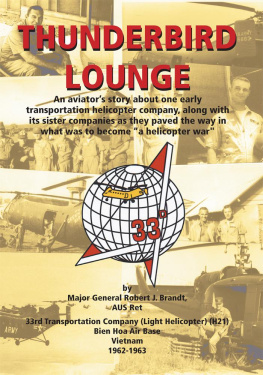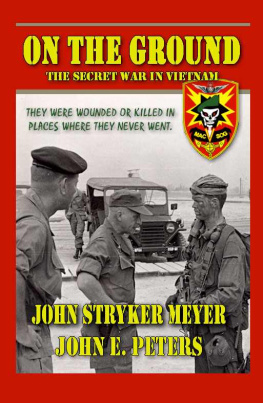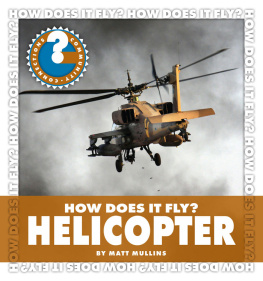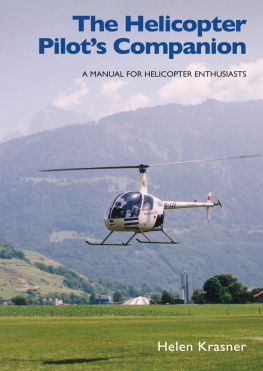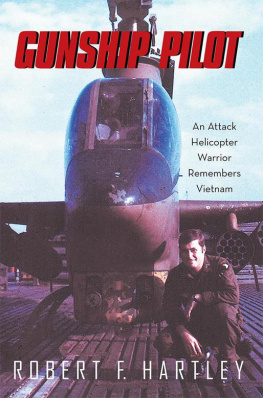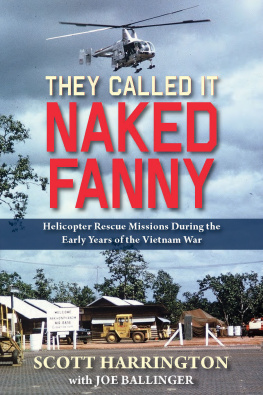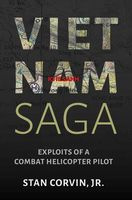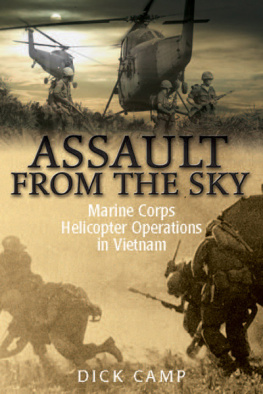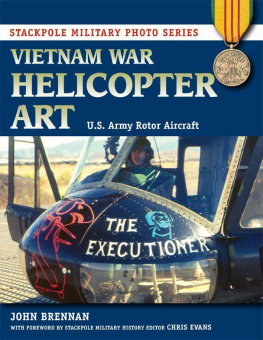THUNDERBIRD
LOUNGE
An aviators story about one early transportation helicopter company, along with its sister companies as they paved the way in what was to become
a helicopter war
By Major General Robert J. Brandt, AUS Ret
33rd transportation company (Light Helicopter)
(H-21)
Bien Hoa Air Base
Vietnam 1962-1963
UPDATED EDITION
Published 2004
Copyright 2001 Robert Brandt. All rights reserved.
No part of this publication may be reproduced, stored in a retrieval system, or transmitted, in any form or by any means, electronic, mechanical, photocopying, recording, or otherwise, without the written prior permission of the author.
National Library of Canada Cataloguing in Publication Data
Brandt, Robert J., 193 7-Thunderbird Lounge : an aviators story about one early transportation helicopter company, along with its sister companies as they paved the way in what was to become a helicopter war
Includes bibliographical references.
ISBN 1-55369-006-0
ISBN: 978-1-4122-4483-1 (eBook)
1. Military helicoptersUnited StatesHistory.
2. United States. Air ForceEquipmentHistory.
3. Helicopter industryUnited StatesHistory.
4. Vietnamese Conflict, 1961-19 75Aerial operations, American. I. Delk, James D., 1932-II. Title.
UG1233.B73 2001 358.4183 C2 001-903415-6
TRAFFORD
This book was published on-demand in cooperation with Trafford Publishing.
On-demand publishing is a unique process and service of making a book available for retail sale to the public taking advantage of on-demand manufacturing and Internet marketing. On-demand publishing includes promotions, retail sales, manufacturing, order fulfilment, accounting and collecting royalties on behalf of the author.
Suite 6E, 2333 Government St., Victoria, B.C. V8T 4P4, CANADA
Phone 250-383-6864 Toll-free 1-888-232-4444 (Canada & US)
Fax 250-383-6804 E-mail
Website www.trafford.com TRAFFORD PUBLISHING IS A DIVISION OF TRAFFORD HOLDINGS LTD.
Trafford Catalogue #01-0408 www.trafford.com/robots/01-0408.html
10 9 8 7 6 5
Dedicated to all those who served in Vietnam, particularly to those who flew as helicopter aviators and crewmembers in what became known as The Helicopter War.
First Lieutenant Timothy M. Lang, Chief Warrant Officer Dale A.
Crull, Captain James E. Wenzel and Second Lieutenant Lynn
Rothenbuhler
Their faces will forever remain indelibly imprinted in my mind
And especially to
Dottie, Kellie and Laura
When HO CHI MINH PROCLAIMED the independence of Vietnam from French rule on September 2, 1945, he borrowed liberally from Thomas Jefferson, opening remarks with We hold these truths to be self evident. That all men are created equal. During the independence celebrations in Hanoi later in the day, American warplanes flew over the city, U.S. Army officers stood on the reviewing stand with Vo Nguyen Giap and other leaders, and a Vietnamese band played the Star-Spangled Banner. Toward the end of festivities, Giap spoke warmly of Vietnams particularly intimate relations with the United States, something he noted, which it is a pleasant duty to dwell upon. Quoted in R. Harris Smith, OSS: The Secret History of Americas First Central intelligence Agency (Delta Ed; New York, 1973), p.354.
Contents
This is the story of the United States Armys 33 rd Transportation Company (Light Helicopter) (CH-21), and its attached units in the struggle that later came to be called the Vietnam War, also known as the Helicopter War. Along with the 57 th , 8 th , 93 rd , 81 st and the UTT transportation helicopter companies they took a scant and unproven airmobile doctrine based on the use of helicopters, tested the concept, and further developed in combat the tactics that are generally employed even today. It also provides a brief history of how the United States became involved in that conflict .
Airborne operations came of age during WWII and played a significant part in the liberation of North Africa, Sicily and Northern Europe. Successful airborne operations were also conducted in the China-Burma-India and in the Pacific. Although the parachute and glider were the methods employed, they were far from satisfactory. Parachutes were relatively a safe method of getting troops into combat; however they were unable to provide cohesive organized units immediately after landing, thereby providing the enemy the opportunity to quickly crush the airborne soldiers. WWII gliders on the other hand could land squads or sections of soldiers better organized to immediately fight. Speed and proximity, however, were their downfall. A flimsy glider landing even at only 40-50 miles an hour encountering obstacles such as trees and anti-landing stakes, could and did wreak considerable damage and casualties.
Following WWII the helicopter promised a new method of air-landing combat troops organized and better prepared to engage the enemy. However, many questions such as the survivability, reliability, lifting capacity of the helicopter, not to mention the tactics to be employed, needed to be further developed. The Korean War had provided the stimulus for the Marines and the Army to test helicopter operations on a limited basis. Based on the results in Korea, the Army greatly expanded its helicopter capability. Yet as the expansion was taking place, there remained many unanswered questions concerning the employment of helicopters in combat. These few initial pioneer U.S. Army Transportation Helicopter Companies provided many of the answers and paved the way for a significant change in how land warfare is conducted.
It is the story of professional army aviators, aircrew men, and the soldiers that supported themreal people; many probably just like those that live next door to you today. They were committed to fighting the Soviets or their surrogates anywhere and anytime. Many of the aviators and crewmembers in the unit had already fought in World War II and Korea. But for most of us, it was our first war, and some ended up making the supreme sacrifice.
The origins of the conflict had roots reaching back many years. Most indigenous peoples in French Indochina (now Vietnam) had been pressing for independence since the colonial days of the last century. Following the defeat of the French by Germany in 1940, the French Vichy government allowed the Japanese to co-occupy Indochina in 1941. This placed Japanese military forces within easy striking distance of all of South East Asia. This event, along with pressure from Britain, focused President Roosevelts attention on Indo-China. This one event brought the United States into the colonial affairs of Indo-China, and eventually into what became our role in the Vietnam War.
The President, influenced by events in Europe, was greatly concerned that Japan, like Germany, was attempting to pre-position troops into areas that would greatly weaken our defenses in the western Pacific. (1) The co-occupation of Indo-China was a direct threat to the Philippine Islands. First, Roosevelt tried to reach a diplomatic solution suggesting that Indo-China be designated a Neutral country with Japan withdrawing her troops from it and joining with the United States, Britain, China, and the Netherlands in a guarantee of this Neutrality. (2) The proposal went nowhere. On July 26, 1941, an Executive Order was issued freezing all Japanese assets and funds in the United States and thus declaring to the Japanese to either ease tensions or face the United States in open conflict. On December 7, 1941 the Japanese chose war.
United States attention returned to Indo-China during 1943. President Franklin D. Roosevelt articulated a clear policy concerning Indo-China is Not to go back to France. (3) James Burns wrote, The President viewed the French record in Indo-China as an utter contrast with the American record in the Philippines. To him [Roosevelt], IndoChina was Western Colonialism of the worst sort. (4) Roosevelts policy went so far as to direct that United States forces would not assist French Forces within Indo-China. Clearly, Roosevelt intended to do everything possible to grant the people of Indo-China their independence from France. This policy placed the United States in the unique position of plotting openly against one of its allies.
Next page
